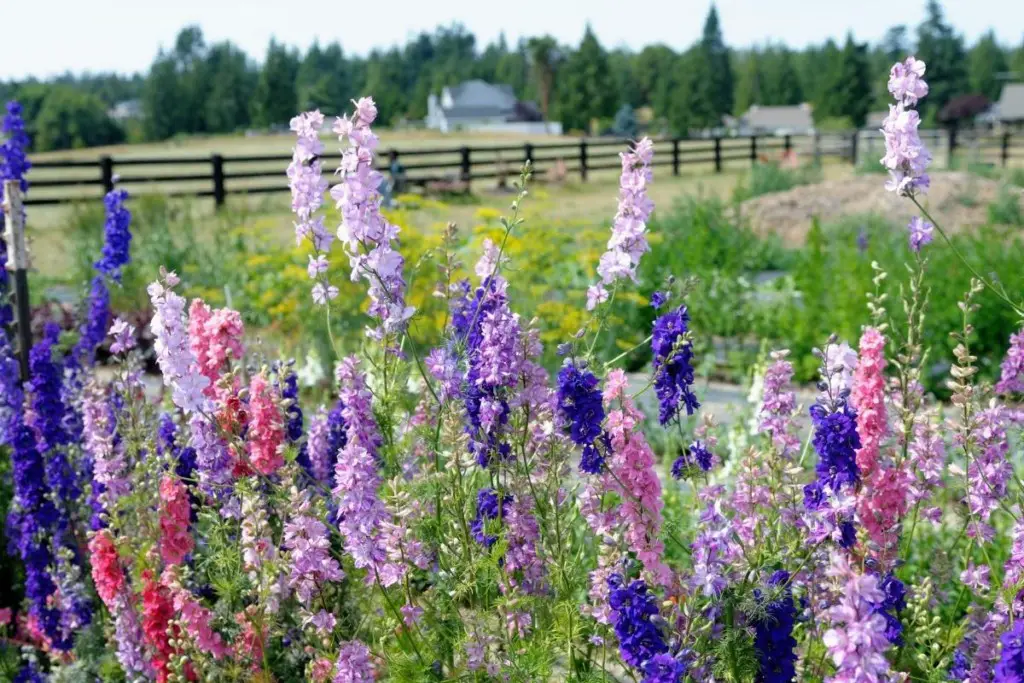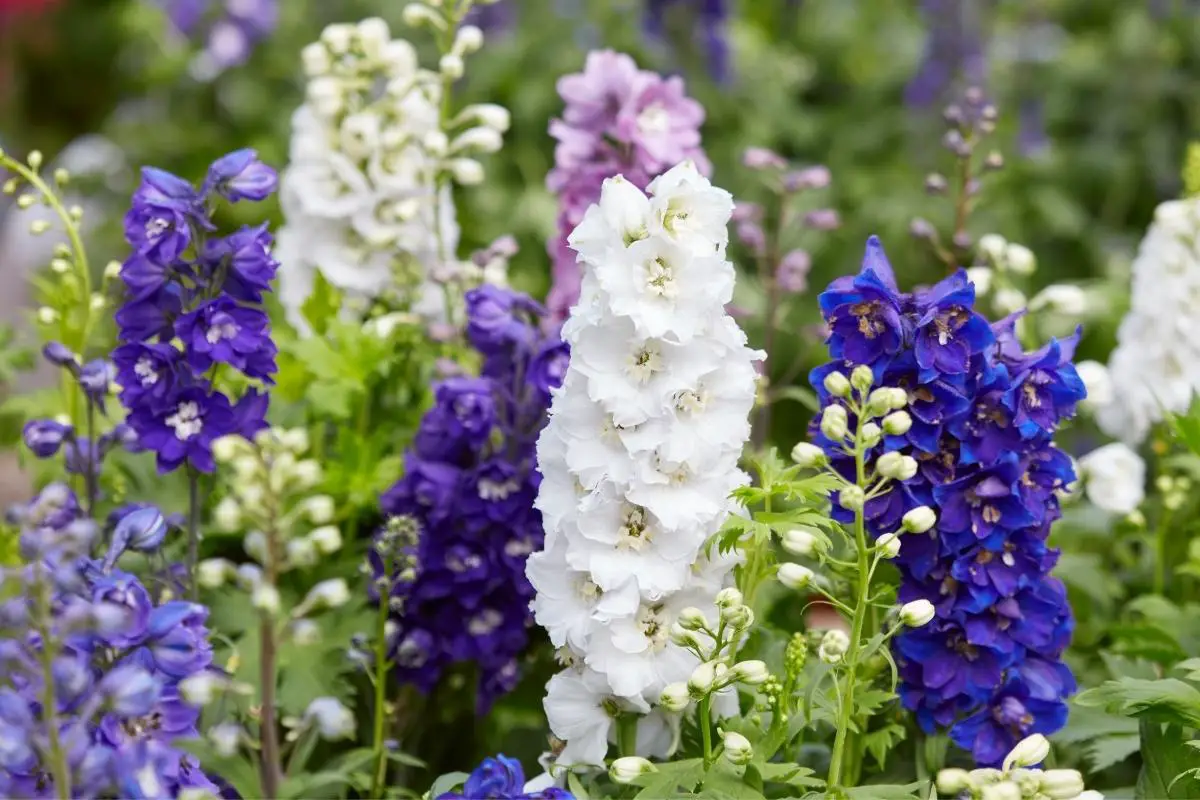The Delphinium Flower is a member of the Ranunculaceae family and is often remembered for its vibrant dark blue flower colors. Unfortunately, all of the perennial plants within the genus Delphinium have the potential to be extremely toxic to animals and humans alike.
Table of Contents
Delphinium Flower
Aside from the fact that Delphinium Flowers are toxic and potentially poisonous, they express themselves with vibrant blue flowers that can reach up to six feet in total height. It’s common for them to bloom in the summertime, starting as early as May, or as late as August.
They are native to specific regions in the mountains of Africa, but they can also be found just about anywhere north of the equator. These plants have an average lifespan of approximately three years and require specific sunlight conditions throughout their life to reach their full potential.
At the very least, they’ll need six hours of full sunlight per day. It’s even better if they can exceed this initial sunlight expectation. You should also keep weeds away from these plants, as they will compete for resources. Source.
How Toxic Are Delphinium Perennial Flowers?
Unfortunately, they are extremely toxic to humans and animals. Coming in contact with a Delphinium flower has the potential to cause several side effects, including skin rashes and irritation.
While simply touching a Delphinium may not be directly poisonous to you, it can still be harmful. If you were to consume this flower, you could potentially be poisoned and become extremely ill.
In some instances, eating this type of flower can result in death. Be extra cautious around toxic plants and flowers like the Delphinium because they do contain enough diterpene alkaloids to cause serious issues or even death. All parts of the delphinium flower are poisonous. Source.
Do Delphinium Perennial Flowers Only Bloom in the Summer?
It’s a safe bet to assume that your gorgeous Delphinium will bloom between the months of May and August. They can start blooming in the early summertime, although depending on local environmental conditions, some bloom later than others.
After blooming, you’ll likely end up with vibrant blue flowers, although there are some instances of purple, pink, white, and magenta flower colors as well. It’s important to remember that these types of flowers need sufficient support to remain stable and to prevent collapse.
Visual Appearance of Delphinium Perennial Flowers?
Let’s talk a little bit about the size of the Delphinium. You can expect these remarkable perennials to grow to a total height of about six feet. In some instances, they can even reach higher heights.
In terms of spread and width, it’s common for Delphinium perennials to span to a size of two to three feet. With colors, the most common is ‘true blue’, although other color combinations are possible as we’ve previously described.
The center part of the flower is oftentimes tinted with white or yellow color patterns. From a distance, just about anyone can pick out the vibrant appearance that is distributed to the naked eye by the Delphinium perennial plant. They are normally only found in the Northern Hemisphere and are quite common in North America and Africa.
For more on Types of Blue Flowers click here.

History of the Delphinium
A flower that was once used to place fear in scorpions is now being reflected on for its unique name that shares historic roots to that of a dolphin. The similar-sounding name is because ancient observers actually believed that the shape of the delphinium flower was identical to the nose of a dolphin.
Another common name for the Delphinium perennial flower is ‘Larkspur’. The entire genus includes more than 300 plants from Ranunculaceae. This vibrant family of plant species shares a lengthy history of symbolism and can be an excellent modern gardening addition to gardens that receive the appropriate amounts of daily sunlight.
Where do Delphinium Perennial Flowers Grow the Best?
The mountainous regions across Africa aren’t the only places where these gorgeous plants can grow and thrive. In fact, just about any region that receives enough sunlight per day can serve as a great location to grow these unique flowers.
For the best results, Delphinium perennial flowers should exist in regions where the temperature is between 62 and 72 degrees Fahrenheit. In addition, they’ll need access to well-drained soil that offers moist and rich properties.
If you are planning on growing ‘Delphinium’ in your own garden, be sure to water them at least once every seven days to prevent them from drying up. You’ll want to ensure the soil remains moist and adding a well-balanced fertilizer should happen at a minimum of at least once per month.
While these plants can grow and thrive in their non-native regions, the Delphinium is currently known to be thriving across various parts of North America and in mountainous parts of Africa. It has ideal perennial characteristics that allow it to spread quickly and thrive in its optimal environmental conditions.
Related Questions
Can Delphinium flowers survive in shade?
While they may be able to survive, it’s certainly not recommended. These flowers need to receive sufficient amounts of sunlight every single day or they will struggle to reach their full potential. It’s acceptable for their roots to receive shade, but the overall plant would prefer a minimum of six hours of full sunlight.
Why do Delphinium flowers have such a short lifespan?
Unlike other perennial flowers, Delphiniums only last for around three years on average. It’s an unfortunate fact about these remarkable plants because it can take overwhelming amounts of maintenance to effectively grow these plants. It’s certainly a sour thought to think that they will only survive for a few years before needing to be replaced.

